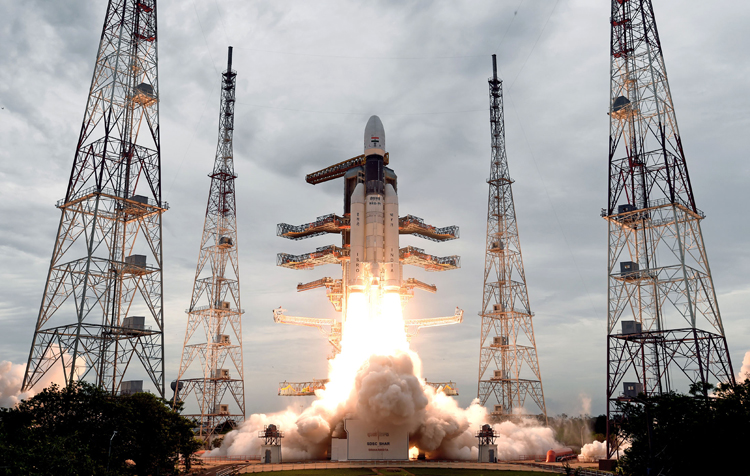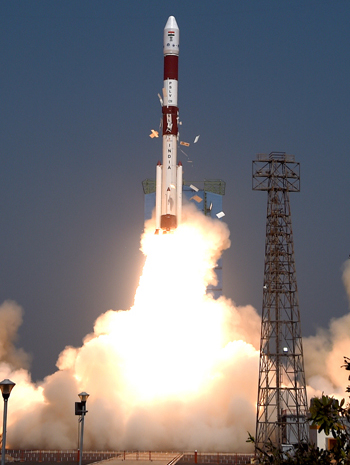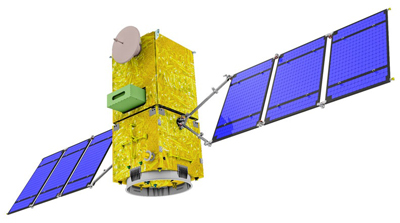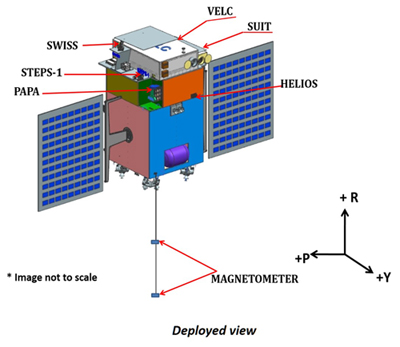INDIAN ARMED FORCES CHIEFS ON OUR RELENTLESS AND FOCUSED PUBLISHING EFFORTS

The insightful articles, inspiring narrations and analytical perspectives presented by the Editorial Team, establish an alluring connect with the reader. My compliments and best wishes to SP Guide Publications.

"Over the past 60 years, the growth of SP Guide Publications has mirrored the rising stature of Indian Navy. Its well-researched and informative magazines on Defence and Aerospace sector have served to shape an educated opinion of our military personnel, policy makers and the public alike. I wish SP's Publication team continued success, fair winds and following seas in all future endeavour!"

Since, its inception in 1964, SP Guide Publications has consistently demonstrated commitment to high-quality journalism in the aerospace and defence sectors, earning a well-deserved reputation as Asia's largest media house in this domain. I wish SP Guide Publications continued success in its pursuit of excellence.
- Prime Minister Modi Visits Punjab’s Adampur Air Base, Interacts with Airmen after Successful ‘Operation Sindoor’; Stern Message to Pakistan
- The layered Air Defence systems that worked superbly, the key element of Operation Sindoor
- Operation Sindoor | Day 2 DGMOs Briefing
- Operation Sindoor: Resolute yet Restrained
- India's Operation Sindoor Sends a Clear Message to Terror and the World – ‘ZERO TOLERANCE’
- Japan and India set forth a defence cooperation consultancy framework, talks on tank and jet engines
ISRO Focus on Make-in-Space
Make-in-Space concepts, quantum communications and advance radars are the technologies ISRO is focusing on as part of the plan to prepare India for the future
 |
The Author is Former Director General of Information Systems and A Special Forces Veteran, Indian Army |

After years of Make-in-India on the scene, ISRO is now working on Make-in-Space and more. Talking to media, ISRO Chairman K. Sivan recently said, “All our rockets have metal casings that are dropped into sea after launch or become (final-stage) space debris. We are working on a technology through which rockets will effectively eat themselves, eliminating waste-dropping into the seas and space debris. We are looking at special materials for casings that can burn up along with motors.” He also said that self-vanishing technology would enable spacecraft destruction once its lifetime is over; through a ‘kill button’ to kick start a process that will burn it in orbit, adding, “When rockets fly, there are defects sometimes. Self-healing materials can correct some of these defects.”
Make-in-Space concepts, quantum communications and advance radars are the technologies ISRO is focusing on as part of the plan to prepare India for the future even as private enterprises manage day-to-day launches. In May 2020, inclusion of private players in the space sector to tap the potential of space technology was announced. This was followed by the formation of an autonomous nodal agency, Indian National Space Promotion and Authorisation Centre (IN-SPACe), an extension of ISRO to include private players in space-related activities.
COVID-19 pandemic and unusual weather conditions have delayed some of India’s most awaited space missions, including Gaganyaan, India’s maiden human spaceflight, and moon mission Chandrayaan-3

Since then, India’s Spacetech sector - backed by favourable government policy, local expertise, and investor scrutiny has been prominent in the news. Several players like Pixxel, Agnikul Cosmos, and Skyroot Aerospace have already partnered with Department of Space (DoS) and ISRO, for furthering development in the Spacetech sector. On February 28, 2021, the public-private collaboration strengthened with the launch of PSLV-C51, the first dedicated commercial mission of NewSpace India Limited (NSIL), ISRO's commercial arm. Its main payload included Brazil’s Amazonia-1 satellite and 18 more satellites, including one from Chennai-based Space Kidz India (SKI).
The COVID-19 pandemic and unusual weather conditions, however, have delayed some of India’s most awaited space missions, including Gaganyaan, India’s maiden human spaceflight, and moon mission Chandrayaan-3. ISRO was to launch two earth observation satellites, one navigation satellite, one purely scientific mission, and the first unmanned flight under the Gaganyaan mission as per its revised targets for 2021. Two of the missions were to use the new small satellite launch vehicle (SSLV) in two development flights.
However, there have only been two launches during 2021 - PSLV C-51 launch in February carrying Brazil’s earth observation satellite Amazonia-1 and the GSLV-F10 mission in August carrying an Indian earth observation satellite EOS-03 that failed. In August 2021, ISRO had plans for three more missions before the end of the year, including the first development flight of the SSLV and earth observation satellites EOS-04 and EOS-06. But these three planned missions appear unlikely this year.

According to a scholar of the Manohar Parrikar Institute for Defence Studies and Analyses, “It is critical for ISRO to quickly conduct the SSLV launches; they have been delayed for far too long. It will be a commercial satellite and some of the slots even in the development flight has been booked by foreign agencies. If the launches do not happen soon, they might move to other launch service providers and ISRO will lose market.”
2022 will be a crucial year for the space agency as it will witness the launches of Aditya L1 (Sun) mission, the first unmanned mission of Gaganyaan and several key satellite missions
In 2021, ISRO will also unlikely be in a position to launch the navigation satellite NVS-01 that is to replace one of the satellites in India’s own regional GPS-like system NAVigation with Indian Constellation (NavIC). The NVS-01 satellite is to replace the IRNSS-1G satellite that was launched in 2016 and has a mission life of 12 years. Among the still functioning satellites in the constellation, the earliest to be launched is IRNSS-1B launched in 2014 with a mission life of 10 years.
Briefing the media, K. Sivan said, “Due to heavy rains and floods in Andhra, we have to reassess the situation.... We can decide on the three launches only when the flood situation improves.” He further said that 2022 will be a crucial year for the space agency as it will witness the launches of Aditya L1 (Sun) mission, the first unmanned mission of Gaganyaan and several key satellite missions.

The pandemic, heavy rains and weather cannot be controlled by ISRO but the organisation can be expected to do its best under any circumstances. Earlier, Jitendra Singh, Union Minister of State for Department of Space, had said that the Gaganyaan is not likely to be launched before 2023. In a written statement to Lok Sabha, he said, “First unmanned mission is planned in December 2021. Second unmanned flight is planned in 2022-23, followed by human space flight demonstration.” However, ISRO is on an interstellar overdrive, with the media reporting there are some 46 slices of mind-breaking technologies taking place in ISRO.
At the same time, the deal that ISRO has inked with Chinese company OPPO creates the impression that money has become the most important factor for ISRO also, which is sad. Under the agreement, ISRO and OPPO India will exchange technical information of NavIC messaging services to build rapid, ready-to-use, end-to-end application-specific solutions by integrating NavIC messaging service with the mobile handset platform keeping in mind the need of Indian users.
ISRO is on an interstellar overdrive, with the media reporting there are some 46 slices of mind-breaking technologies taking place in ISRO
It is not a question of how the ISRO-OPPO India deal would compromise security, if any? The important question is why should ISRO sign a deal with a Chinese company when China is developing technologies to disrupt and kill our weapon systems and satellites? Why not a firm from a country other than China if we didn’t have indigenous capability? Or was there pressure from India’s ‘deep state’ to choose OPPO, which should be sacrilage? As it is, China would be hell-bent to get inside the programmes of ISRO by indirectly exploiting the public-private partnerships. We need to be extremely cautious as a nation.
With reference to Quantum Communications, it is interesting to note that Edward Snowden’s leaks in 2013 revealed that America’s covert information gathering capabilities in China galvanised Beijing to accelerate progress in quantum communication - the 'gold standard' for security. As a result, in 2018 China registered over four times more patents than the US In quantum communication and cryptography.





